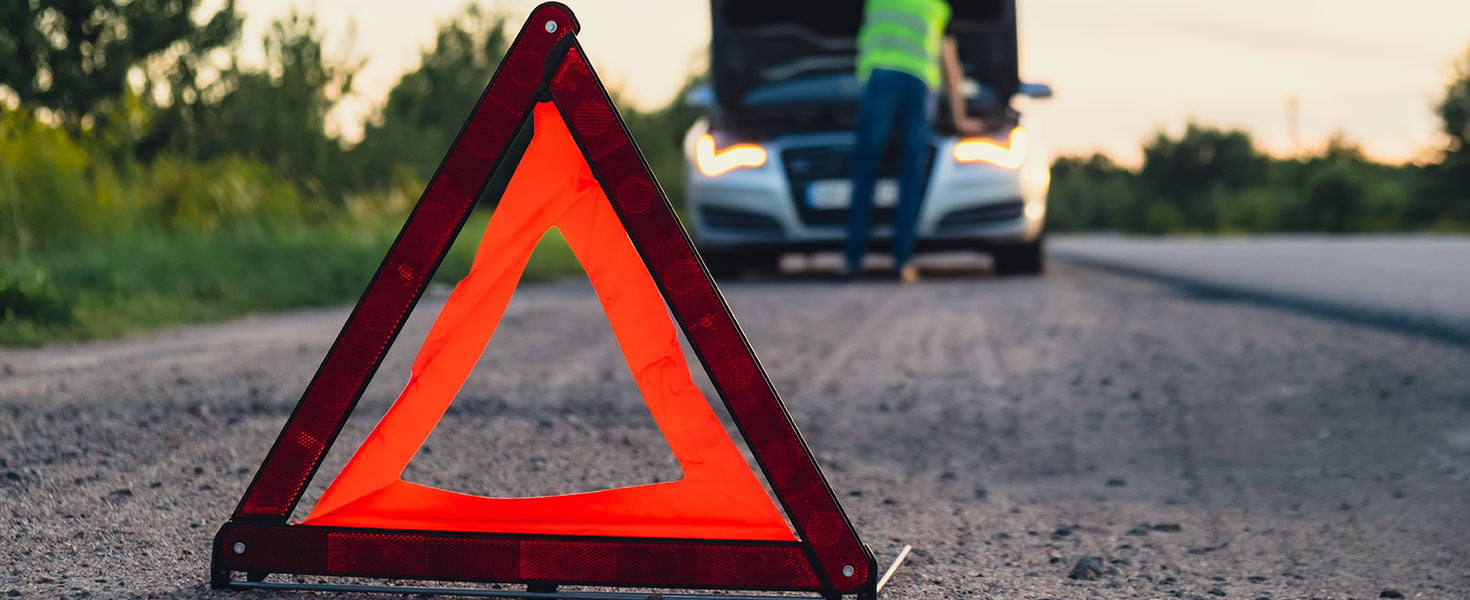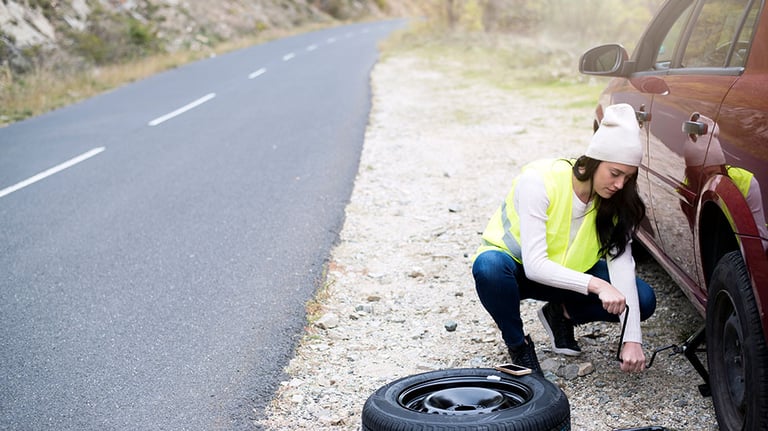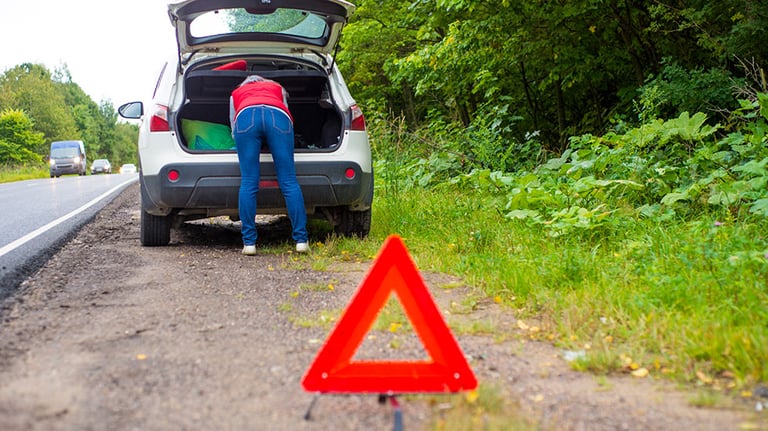How to Stay Safe in a Roadside Emergency
Lifesaving steps you can take to stay safe until AAA Emergency Roadside Assistance arrives


While most vehicles are outfitted with a few modest supplies to help drivers in case of an emergency—such as a spare tire, jack, jumper cables, and roadside flares—even the most well-outfitted vehicle is likely missing other crucial items that can help keep drivers safe in the event of an emergency.
Of course, the best preparation for a roadside emergency is not just the supplies in your car but also the mindset you bring. By dedicating a little time to mentally prepare yourself, you’ll be able to handle roadside emergencies with confidence when they arise.
So, do you have a plan in place? Do you know how you'd handle a flat tire on the interstate or being stuck in the snow late at night? A little preparation can go a long way toward ensuring your safety while you wait for AAA Emergency Roadside Assistance to arrive.

Pack a roadside emergency kit—and keep it updated
Keeping a stocked roadside emergency kit in your vehicle is one of the best ways to prepare for the unexpected. The last thing you want is to be stranded for hours without supplies that could keep you comfortable and safe.
Your roadside emergency kit should include at least the following:
- Emergency flashlight
- Flares
- Orange triangles
- Safety blanket
- Bottled water
- Jumper cables
- Spare phone charger
- 10k+mAh external battery pack
- Nonperishable food (for example, nuts or granola bars)
A well-packed kit is only good if the supplies are functional, so be sure to check your kit at least once per season. This gives you the chance to ensure everything is fully stocked and working—because you don't want to be stranded at night only to find the flashlight you packed has dead batteries.

Stay inside your vehicle, where it’s safer
If your vehicle is stranded, whether it's on a highway or surface street, pull over as far to the right as possible and stay inside, buckled up, with your hazard lights flashing. Your vehicle is equipped with airbags and seatbelts, which will help protect you in the event your car is struck by another vehicle while you wait for help.
If you’re unable to move your vehicle out of the flow of traffic, never unbuckle or attempt to leave. In situations where traffic is flowing around you, it's extremely dangerous to get out. To make yourself as visible as possible to other drivers, do everything you can—such as hanging a loose piece of cloth like a white T-shirt or other brightly colored garment from your window so that it moves and flaps, drawing attention to your vehicle. You can even include a cloth for this purpose in your emergency kit.

Decrease risks if you must stay outside your car
If the situation requires you to exit your vehicle while it's stranded—and you’ve pulled over as far to the right, out of traffic, as possible—exit from the side facing away from traffic. This is typically the passenger side of the vehicle. Once outside, move as far as you can away from the vehicle—a safe distance is at least 40 feet. This reduces your risk of being struck by other cars or hit by flying road debris in the event of a collision or another emergency while you wait for help.
Avoid common—and possibly deadly—mistakes
Roadside emergencies can be sudden and stressful, often leading to mistakes by those who aren't prepared. The pressure can result in thoughtless actions that increase danger for drivers, passengers and everyone who shares the roadways.
Maximize your safety—and the safety of emergency responders, your passengers, and other motorists—by avoiding these common mistakes:
- Never step into oncoming traffic. Always stay aware of the traffic around you. As much as possible, stay inside your vehicle, and make yourself visible to other motorists by using your hazard lights, headlights, or any reflective materials you may have.
- Never unbuckle your seatbelt. The safety features inside your vehicle, including airbags and seatbelts, offer the best protection in most situations. Stay buckled up unless you absolutely must exit.
- Don't shift out of park. Keep your vehicle in park to prevent it from rolling into traffic, over a roadside technician, or over yourself. When help arrives, remain seated, and wait for instructions.
- Don’t engage in distractions. Roadside emergencies are not the time for texting, taking selfies, or playing on your phone. Keep your eyes up and ears open. Stay alert to your surroundings to better protect yourself and others.
- Don’t attempt roadside DIY repairs, especially complex ones and on busy roadways. Put safety first, and leave the roadside repairs to the pros.
. . . . .
Even if your vehicle is new or you rigorously maintain it with regular oil changes and visits to the automotive shop, a roadside emergency could be somewhere down the road. Be sure to have a plan, review it regularly, and keep the proper supplies in your car to ensure your roadside experience is as safe as possible for you, your passengers and everyone who shares the roads.
